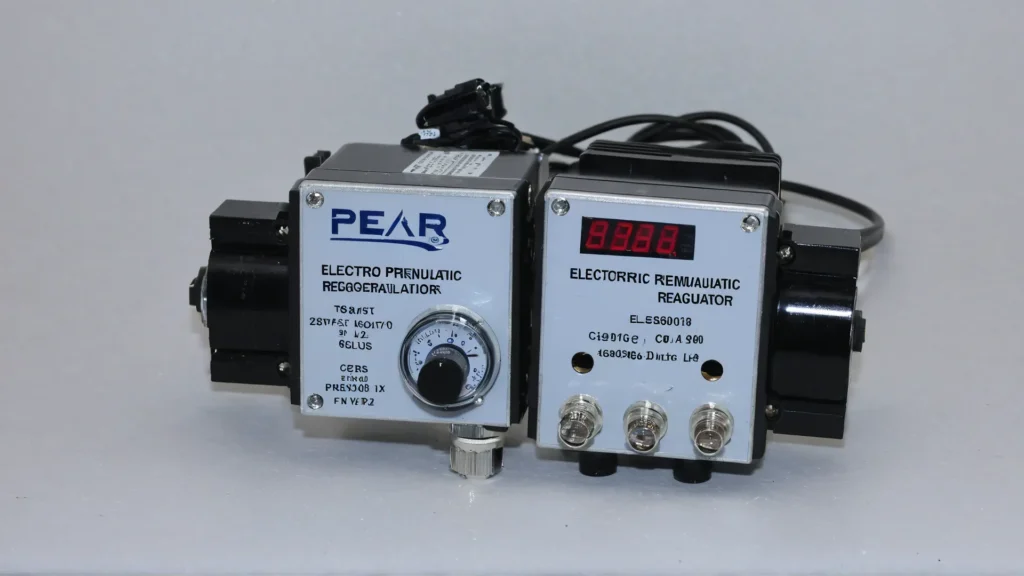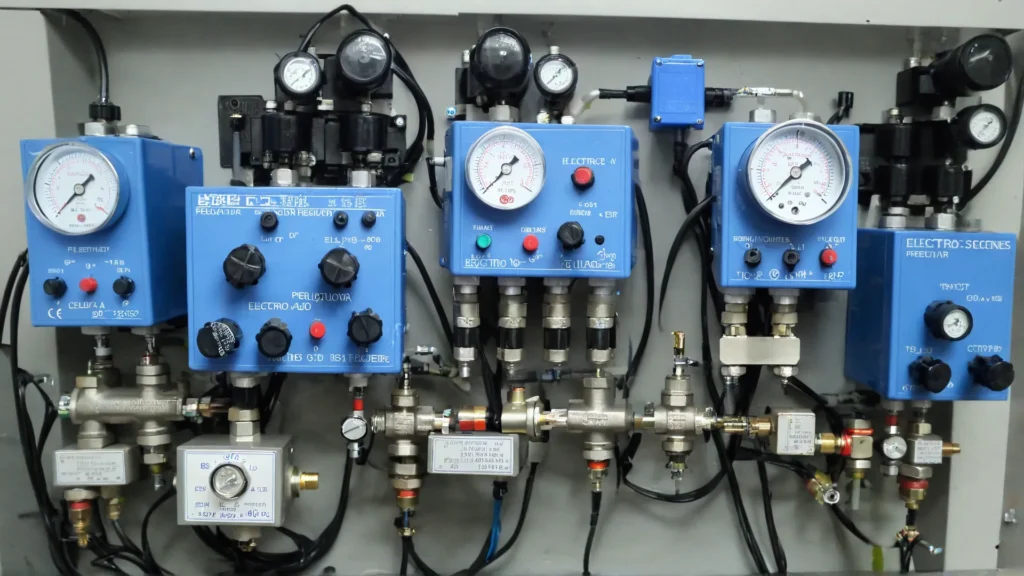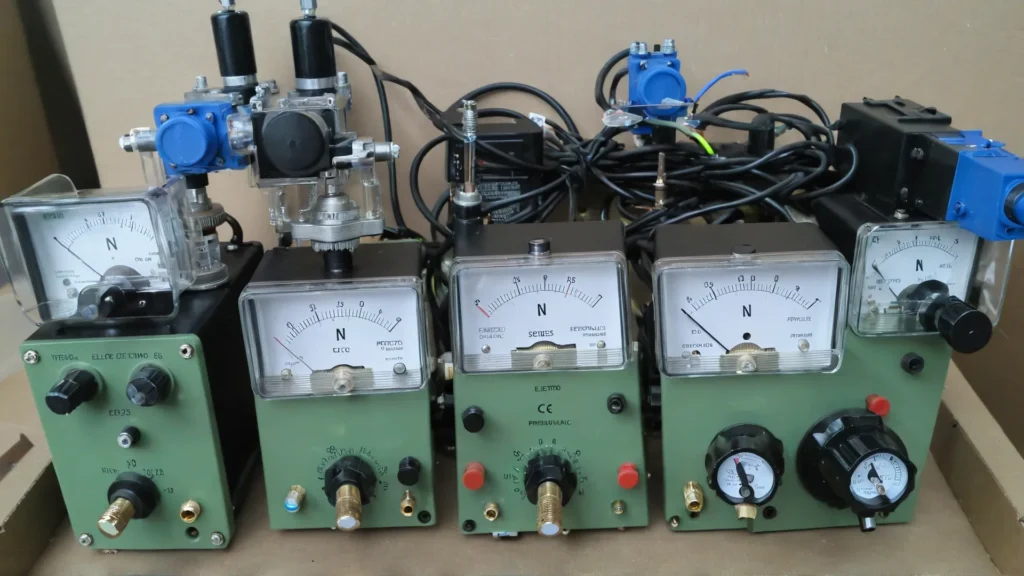What is electro pneumatic regulator
Have you ever wondered how modern industries achieve precise control over pneumatic systems?
An electro-pneumatic regulator is a device that uses electronic signals to control pneumatic pressure with high accuracy and responsiveness.
In this post, we will explore its components, working principles, advantages, and applications, providing a comprehensive understanding of this essential technology.
What is electro pneumatic regulator?
In modern industrial and automation systems, precise control of air pressure and flow is one of the key factors to achieve efficient production.
For this reason, the electro-pneumatic regulator has become a vital device.
It combines electronic control technology with traditional pneumatic systems to achieve precise regulation and control of air pressure.
Through the input of electrical signals, the electro-pneumatic regulator can automatically adjust the output air pressure to meet the needs of various industrial processes.

How does an electro-pneumatic regulator work?
An electro-pneumatic regulator operates by converting an electronic input signal into a proportional pneumatic output. This process begins with the electronic control unit receiving a signal, typically in the form of voltage or current.
The control unit then adjusts the position of a solenoid valve. This valve modulates the flow of air into a pressure chamber. Inside the chamber, a pressure sensor continuously monitors the air pressure.
The sensor feeds real-time data back to the control unit. This creates a closed-loop system, allowing for precise adjustments to maintain the desired pressure. The result is a highly accurate and responsive control of pneumatic pressure, essential for various industrial applications.
Components of an Electro-Pneumatic Regulator
An electro-pneumatic regulator consists of several key components that work together to control pneumatic pressure with high precision.
Solenoid Valve
The solenoid valve is a critical component that modulates the flow of compressed air. It responds to electronic signals by opening or closing, allowing the regulator to adjust the air pressure accurately.
Pressure Sensor
The pressure sensor continuously monitors the air pressure within the system. It provides real-time feedback to the control unit, enabling precise adjustments to maintain the desired pressure setpoint.
Electronic Control Unit
The electronic control unit processes input signals and adjusts the solenoid valve accordingly. It ensures that the output pressure matches the required specifications, creating a closed-loop control system.
Pressure Chamber
The pressure chamber is where the air pressure is regulated. It receives air from the solenoid valve and is monitored by the pressure sensor to ensure consistent pressure levels.
Feedback Loop
The feedback loop involves the pressure sensor sending data back to the control unit. This loop allows for continuous monitoring and adjustment, ensuring high accuracy and responsiveness in pressure control.
What is the purpose of a pneumatic regulator?
A pneumatic regulator serves to maintain a consistent and precise air pressure within a pneumatic system. It achieves this by automatically adjusting the flow of compressed air to match the desired pressure setpoint. This regulation is crucial for ensuring the optimal performance and efficiency of pneumatic devices and machinery.
By controlling the air pressure, a pneumatic regulator prevents fluctuations that can lead to equipment malfunction or inefficiency. It enhances the reliability and safety of pneumatic systems by providing stable operating conditions. This stability is essential in applications where precise pressure control is necessary, such as in automation and manufacturing processes.
Pneumatic regulators also help in conserving energy by minimizing the waste of compressed air. They ensure that only the necessary amount of air is used, reducing operational costs and enhancing system sustainability.

Applications of Electro-Pneumatic Regulators
Electro-pneumatic regulators are widely used in various industries due to their precision and reliability in controlling air pressure.
Industrial Automation
In industrial automation, electro-pneumatic regulators control the pressure of pneumatic actuators and grippers. This ensures accurate and repeatable movements, which are essential for tasks such as assembly, packaging, and material handling.
Automotive Industry
In the automotive industry, these regulators are used in testing and manufacturing processes. They help maintain consistent pressure in systems like fuel injection testing, brake systems, and suspension systems, ensuring high performance and safety standards.
Printing and Packaging
Electro-pneumatic regulators play a crucial role in printing and packaging industries. They control the pressure in printing presses and packaging machines, ensuring consistent quality and reducing material waste.
Medical Equipment
In medical equipment, precise pressure control is critical. Electro-pneumatic regulators are used in devices like ventilators and anesthesia machines, where maintaining accurate pressure levels is vital for patient safety and treatment efficacy.
FAQs
How does an electro-pneumatic regulator differ from a traditional pneumatic regulator?
Traditional pneumatic regulators rely on mechanical control, offering limited precision and response speed. In contrast, an electro-pneumatic regulator uses electronic controllers and sensors to achieve higher accuracy, faster response, and greater automation, making it more adaptable to complex industrial needs.
How do I choose the right electro-pneumatic regulator?
When selecting an electro-pneumatic regulator, consider the specific needs of your application, such as the required pressure range, control precision, response speed, operating environment (e.g., temperature, humidity), and compatibility with existing systems. Durability, maintenance needs, and cost are also important factors to consider.
What are the main advantages of electro-pneumatic regulators?
The main advantages include high-precision pressure control, fast response times, good repeatability, and excellent integration with digital control systems. These features make them highly effective in complex systems where precise control is crucial.
Conclusion
Electro-pneumatic regulators provide precise control of pneumatic pressure using electronic signals. They are essential in various industries, including automation, automotive, and medical equipment. Their accuracy and reliability enhance system performance and efficiency.
For more insights on selecting the right electro-pneumatic regulator, explore our detailed guides and resources.





